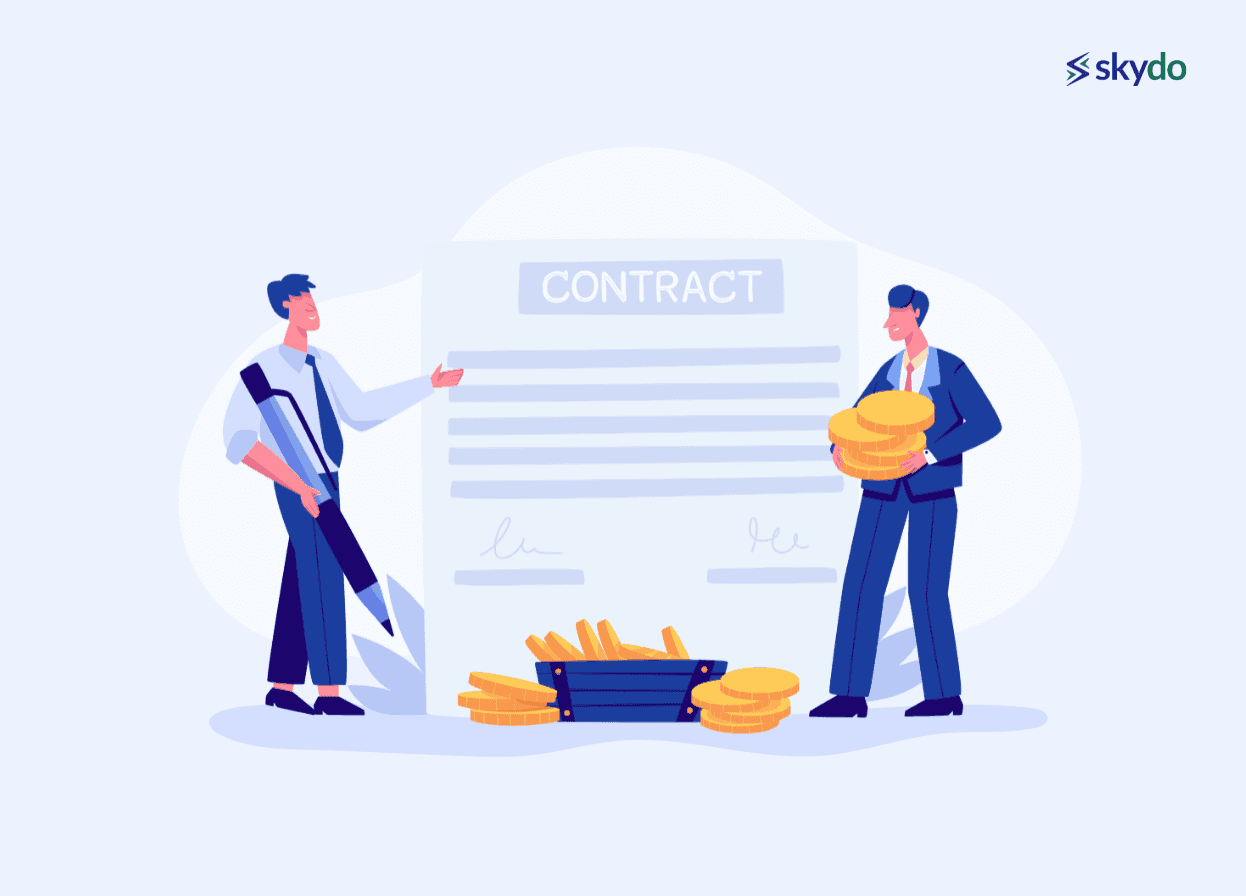Decoding Freelance Price: How to Rate Your Services Fairly

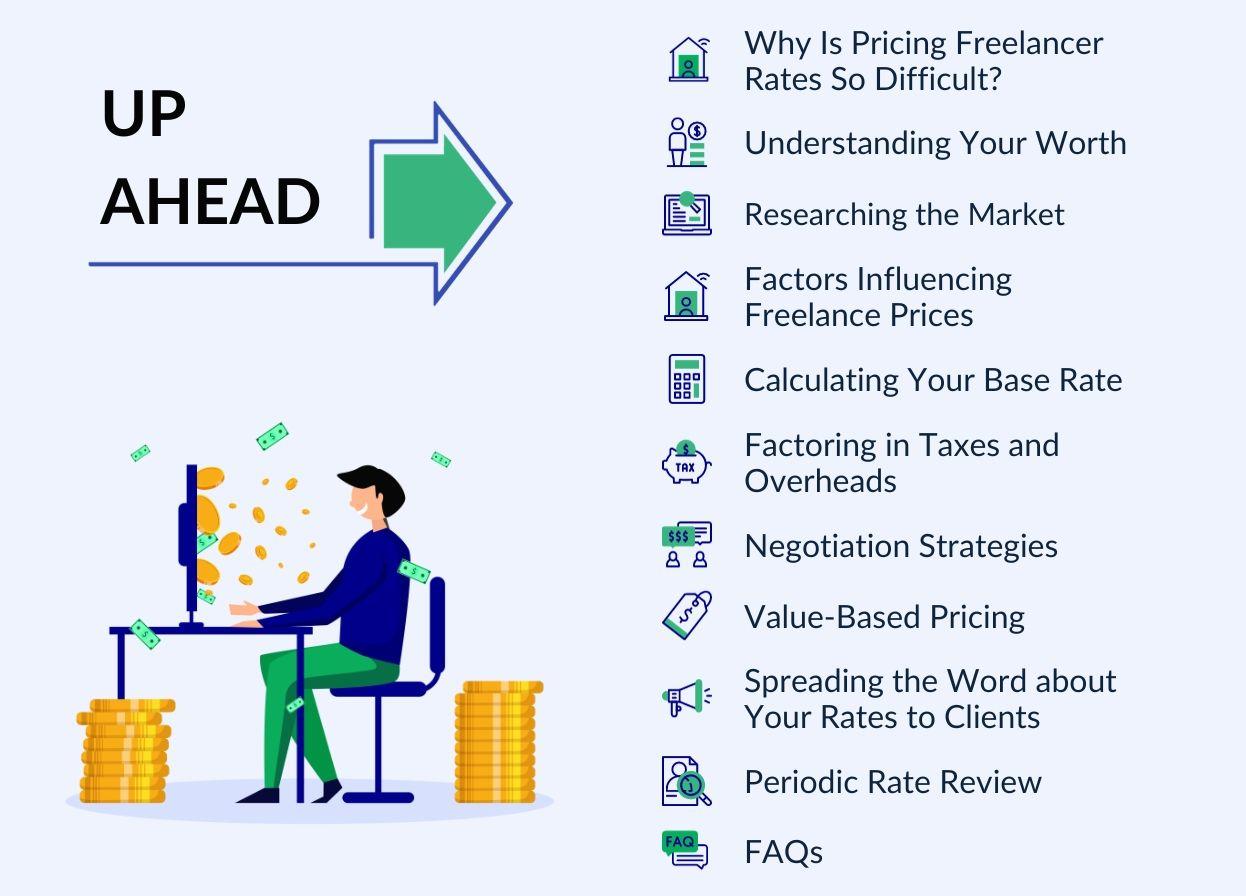

Setting the right price isn't just about numbers; it's a sweet spot where freelancers and clients win mutually. For freelancers, accurate pricing showcases their worth, fueling motivation to deliver their A-game. Clients, on the other hand, gain a premium service without the sticker shock. As trust blossoms, projects flourish. Fair freelancer pricing isn't a transaction—it's the heartbeat of a thriving partnership where both sides reap the rewards of quality and value.
This guide will lead you step-by-step through evaluating your skills and pricing your services right.
Why Is Pricing Freelancer Rates So Difficult?
Generally, the price you pay to the utility reflects the expected quality of a product or service. The right freelancer pricing can send the right signals to your client. It’s a direct marker of your value and worth. Underprice yourself, and your contribution might not be valued. Overprice yourself, and you start losing work to your competitors.
So, how do you achieve the middle ground?
Understand Your Worth
Begin by evaluating your skills, expertise, and unique selling points. Assess the value you can bring and anchor your price on the same. Reflect on your experience and track record. Remember, the expertise you gained over the years is an investment, not an expense. A freelancer with more years of experience commands a better price than a newcomer.
Recognise the value you bring to clients' projects. Can you help the client build their website from scratch or design their product brochure with finesse? Or can you provide a single service, such as content writing, graphic design, SEO, etc.? How rare, complex, and strategy-driven your skill is will also affect your pricing.
Tell them the ROI you bring to the table with your skillset. This way, you will always be able to set a higher price for yourself.
Researching the Market
Reaching a consensus on your pricing structure and industry standards is equally crucial to keep your pricing structure up-to-date and relevant. Explore the average rates and industry standards to inform yourself about what other freelancers with similar skill sets and experience charge.
Check out freelance job sites like Upwork and Freelancer to find out what other freelancers charge for different services. This research will help you in two ways.
- You will learn the current industry rates
- The rate your potential clients are willing to pay
One thing to consider while researching the market is recognising regional variations in freelancer pricing. The location of your client does impact the rates they can offer. A client in Africa won’t pay as much as a client in Japan. Local rates and other factors impact freelancing rates as well.
Factors Influencing Freelance Prices
There isn’t one sole factor impacting freelance prices. Often, it is a confluence of many factors that determines whether you receive a good rate. Here are a few to consider.
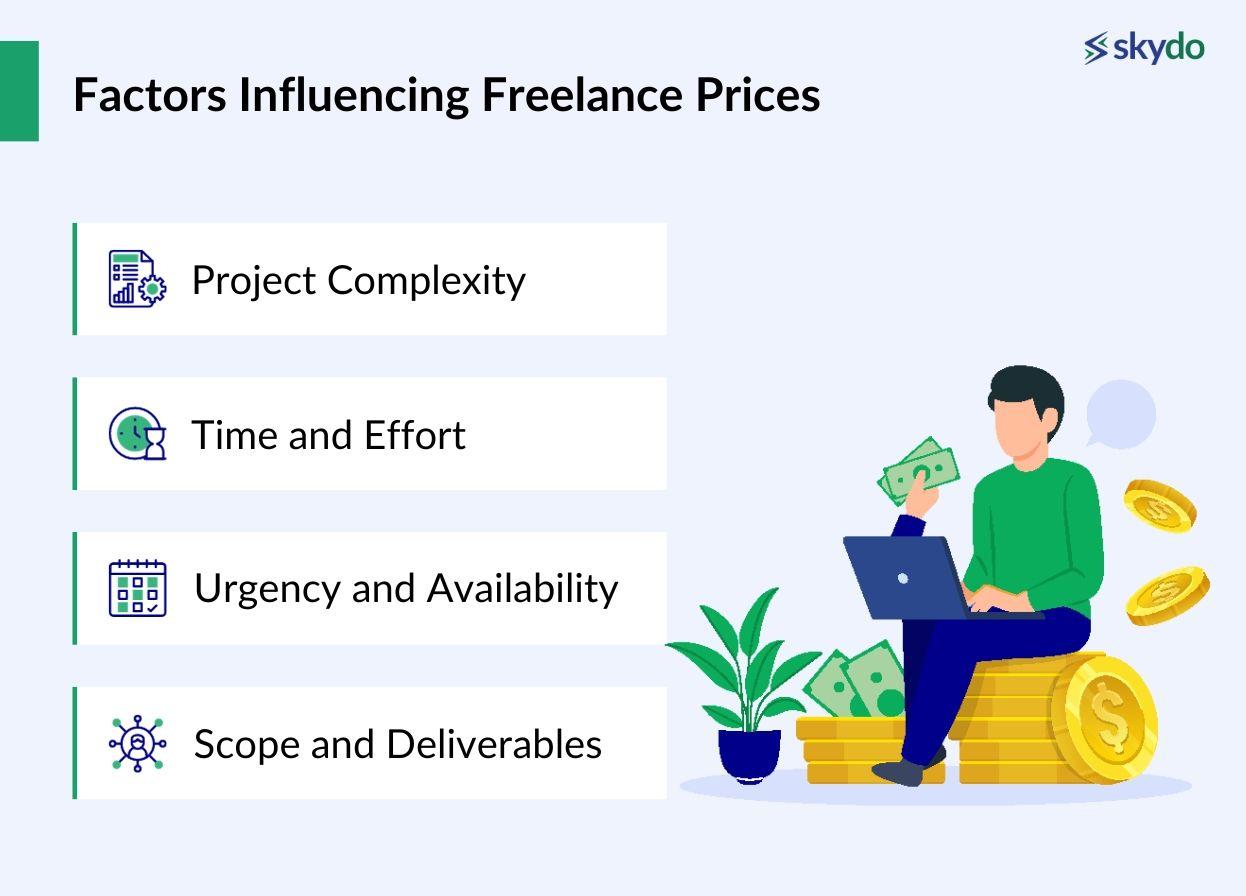
1. Project Complexity
A project requiring a base skill or single service will have a lower rate. A complex project, which requires building from scratch and strategising, invites a higher rate. You must charge higher for projects that require specialised skills and advanced knowledge requirements.
Kashmira, a CA firm owner says, “I believe in fair pricing that aligns with the value I provide. It's not just about the hours I put in, but the years of expertise and the impact my work has on my client's success. So, the complexity of the project along with the skills utilised will be the primary components of pricing.“
2. Time and Effort
The time and effort involved in a project, until it is live and bringing results, are crucial determiners of freelance prices. However, there’s a catch. Often, clients fail to recognise the time spent researching or preparing for the project initiation, communication, and other secondary tasks. Ensure you factor in the same while estimating the time required for different project types.
Consider this example:
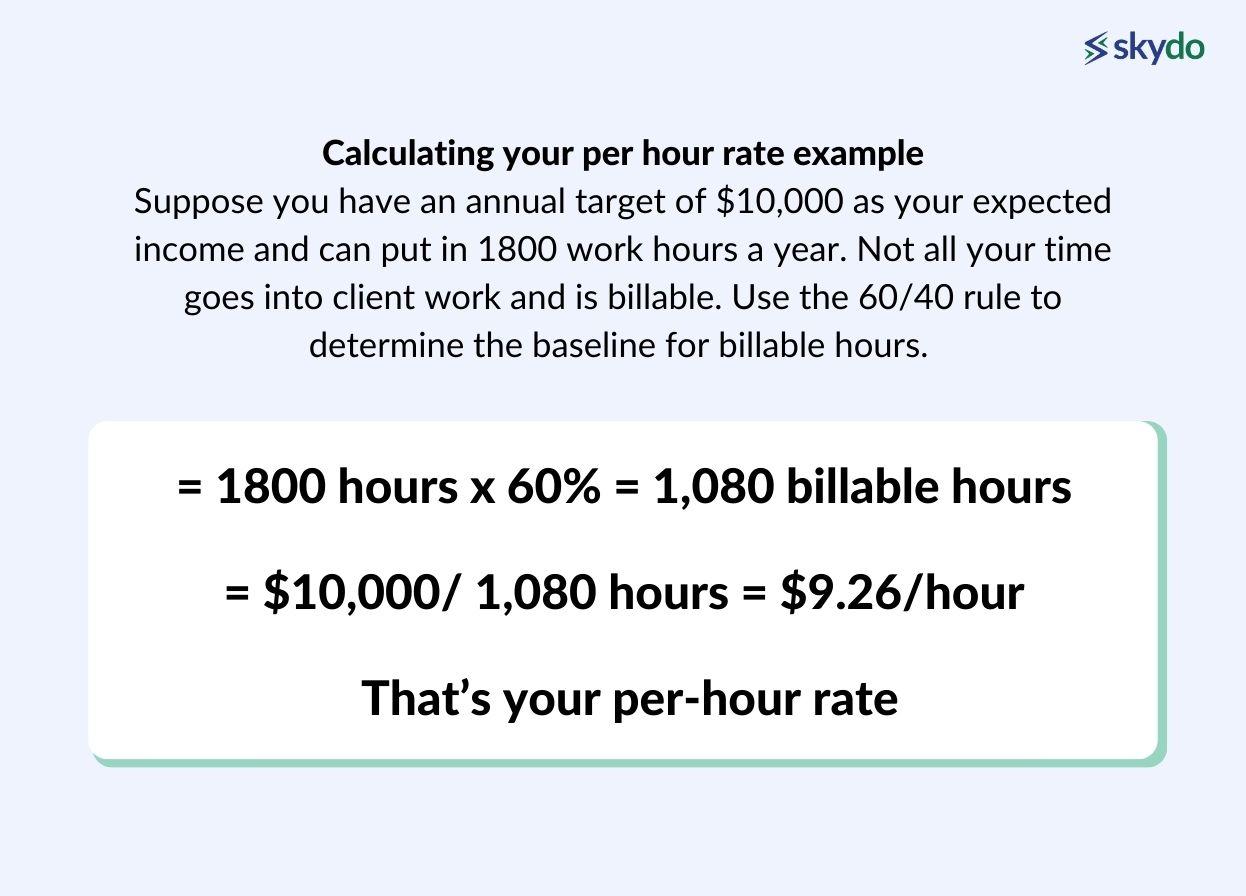
Suppose you have an annual target of $10,000 as your expected income and can put in 1800 work hours a year. Not all your time goes into client work and is billable. Use the 60/40 rule to determine the baseline for billable hours.
= 1800 hours x 60% = 1,080 billable hours.
= $10,000/ 1,080 hours = $9.26/hour
That’s your per-hour rate.
3. Urgency and Availability
Always charge higher rates if the project requires you to work with urgency and a strictly tight schedule. Whenever there is a need for tight deadlines to be met and immediate availability, you are foregoing working on some other project or task. Charge premium rates for delivering work urgently or on an ad-hoc basis to cushion the possible loss/delay for another project.
4. Scope and Deliverables
Most projects are different in scope and requirements. Always make pricing adjustments for different deliverables. More complex, urgent, and multi-faceted tasks should be charged higher than a single, simple task.
Avinash Verma, a Freelance Software Developer with over a decade of experience narrates his saga of pricing his services right–
“I believe in a pricing strategy that considers two critical factors: the client's location and prevailing market rates within that geographical area. My approach is built on flexibility, tailored to meet diverse client needs and budgets. However, this flexibility hinges on the clarity and precision of a client's requirements.
Some projects may involve multiple revisions, demanding additional time and effort, which may necessitate a different pricing approach. Moreover, my pricing strategy is also influenced by the long-term potential and the excitement the project holds for me.
My journey began at a modest hourly rate, gradually adjusting with experience and client feedback. I believe in a collaborative process that aligns value with satisfaction.”
Calculating Your Base Rate
Determine the minimum acceptable rate based on personal expenses and financial goals by asking yourself a few questions.
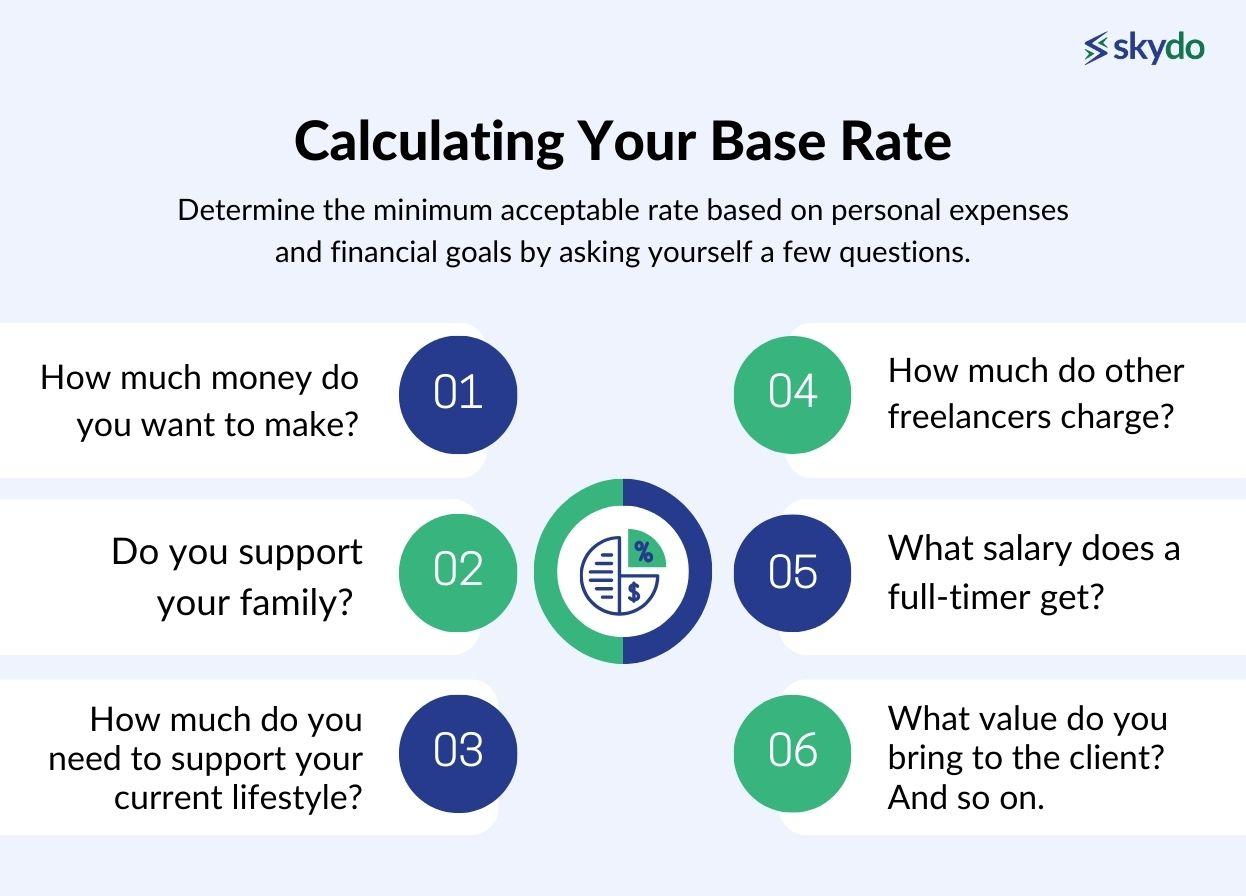
- How much money do you want to make?
- Do you support your family?
- How much do you need to support your current lifestyle?
- How much do other freelancers charge?
- What salary does a full-timer get?
- What value do you bring to the client? And so on.
When you consider your financial goals while setting your prices, you are future-proofing your profession and income and working towards building job security.
Govind Shah, a fellow freelancer who has been through this process multiple times reveals, “I consider the market demand, project complexity, and the time and effort invested in delivering exceptional results when determining my price. I constantly evaluate and adjust my pricing to stay competitive in the market while ensuring I don't undervalue the expertise and dedication I bring to every project.”
Avoid underpricing and value your time appropriately. When paid well, you can put the best of your abilities into your work without scavenging for more work. Set rates per hour or piece basis to best suit the project scope.
Factoring in Taxes and Overheads
A freelancer is a pseudo-firm performing every work process and function individually. You don’t coordinate with your team, plan your schedules and streamline work, manage expenses, file taxes, and record expenses for any software you use or overhead expenses. You file your taxes, too.
Factor in global taxes and overhead expenses such as health insurance, business licence, office space rent, marketing costs, and freelance platform fees if you use any.
Self-employment comes with its sweet berries and hot peppers, and you need to savour both. Understand the nuances of self-employment taxes and deductions. Don’t forget to include business expenses like software, equipment, and marketing. Building your profile on LinkedIn or Twitter requires time, effort, and skill and must be counted as an expense, too.
If you work with international clients, adjusting rates based on any global taxes or currency conversion charges is necessary to ensure a profitable and sustainable freelance career.
Negotiation Strategies
Always be a price maker rather than a price taker. Value your efforts and, likewise, make your clients value your work. Negotiate the terms, conditions, and pricing with them. Always formalise the same through a legally binding contract. Justifying your rates with clear explanations of value and back them up with case studies.
Offer competitive but fair rates. Finding a middle ground that satisfies you and the client is necessary to get the contract and build a long-standing relationship with them.
Value-Based Pricing
While pricing your work based on the time and effort you put in is essential, you cannot ignore the value addition you bring to your client’s project while determining your Freelance prices. A better-skilled and more experienced freelancer will have more on offer than a new freelancer still building their skills.
Connecting your rates to the positive impact on clients' businesses is a reasonable pricing model for any freelancer. If you want to go a step ahead, communicate the return on investment (ROI) for your services. Mention the same on your website or client proposal to have a better impression on the client.
Spreading the Word about Your Rates to Clients
Have an updated portfolio ready whenever you initiate a conversation with a prospective client. Incorporate rates into your portfolio, website, or initial communication to let the clients know what they might be charged. That way, you can save time by engaging in only those communications with common price expectations between both parties.
Ensure transparency in pricing to build trust and manage client expectations. Break down your charges to help the clients understand how you arrived at a particular figure and why you must charge such Freelance prices. Address client inquiries about pricing confidently and back with references, testimonials, and data-driven results from your previous projects.
Periodic Rate Review
The freelancing landscape is ever-evolving, and market trends push or pull freelance pricing. For instance, a bear market may invite lower rates than usual as founders face a lack of demand and cash crunch, and vice versa.
Regularly assessing and adjusting your rates based on experience and demand can help you stay in the game and beat competitors. Ensure your rates remain competitive and reflective of your expertise. Staying relevant is the key to building retainer clients and getting better projects to add to your portfolio of work.
Conclusion
Freelancing is rewarding if you have the resilience and patience to stay put. Getting paid fairly for your job is rewarding and encouraging, and keeps the morale high for a freelancer working as a one-man army.
Always look for opportunities to learn, adapt, and grow. Continuous learning and adaptation in the dynamic freelance landscape and charging fair freelance prices is the only way to sustain and build a repertoire as a freelancer.
FAQs
Q1. What should be the hourly rate for freelancers for beginners?
Ans: Beginners on freelancer platforms often start around $30 to $50 per hour. It's crucial to consider your skills, experience, and the market demand. As you gain expertise, you can gradually increase your hourly rate.
Q2. How do you charge per project?
Ans: Charging per project can be based on an estimated number of hours multiplied by your hourly rate. Alternatively, you can set a fixed project rate after assessing the scope and requirements.
Q3. How to earn $1,000 per day as a freelancer?
Ans: To earn $1,000 per day, freelancers can either increase their hourly rate and work more hours or secure higher-paying projects. Developing specialised skills, building a strong portfolio, and networking can attract premium clients willing to pay higher rates.
Q4. What kind of value do I offer to the client? What do they achieve once they use my services?
Ans: Clients benefit from your expertise, efficiency, and quality work. By delivering solutions to their problems, meeting deadlines, and maintaining open communication, you contribute to their success, satisfaction, and the overall growth of their projects or businesses.
